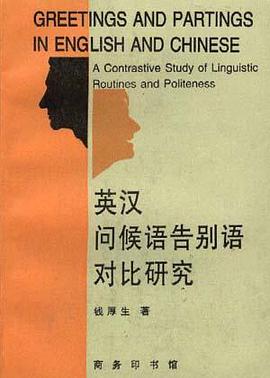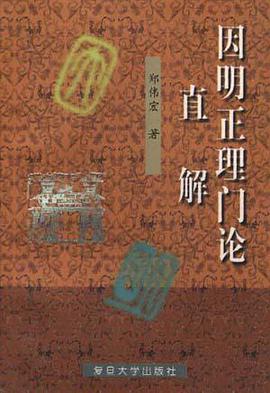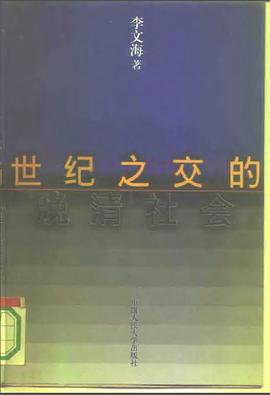Introduction
Chapter 1 The Structure of Greetings and Partings
1.1 Greetings and Partings as Conversational
Components
1.2 Greetings and Partings as Speech Units
1.3 Greetings and Partings as Adjacency Pairs
Chapter 2 The Functibn of Greetings and Partings
2.1 Greetings and Partings as Illocutionary Acts
2.2 Greetings and Partings as Access Rituals
2.3 Greetings and Partings as Linguistic
Routines of Politeness
Chapter 3 The Use of Greetings and Partings
3.1 Greeting and Parting Strategies: Brown
and Levinson's Model
3.2 Social Factors in Greetings and Partings;
Laver's Framework
3.3 Other Factors in Greetings and Partings
Chapter 4 Greetings and Partings in English and
Chinese: A Contrastive Study of Their
Repertoire
4.1 Data Collection
4.2 Varieties of English and Chinese Greetings
and Partings
4.3 Difference in English and Chinese Greetings
and Partings
4.4 English and Chinese Terms of Address
Chapter 5 Greetings and Partings in English and
Chinese: Experiments on Their Use
5.1 Experimental Method
5.2 Frequency of Use of English and Chinese
Greetings and Partings
5.3 Degree of Politeness in English and Chinese
Greetings and Partings
5.4 Social Factors Constraining the Use of English
and Chinese Greetings and Partings
5.5 The Use of English and Chinese Terms of
Address
Chapter 6 Greetings and Partings in Cross-Cultural
Communication and Conclusion
6.1 Greetings and Partings Between English
and Chinese Speakers: Problems in
Cross-Cultural Communication
6.2 Conclusion
Appendix 1 A Questionnaire on English Greetings
and Partings
Appendix 11 A Questionnaire on Chinese Greetings
and Partings
References
Index
Figures
Figure 1 Summary Diagram of Clark's Analysis of
Conversational Structure
Figure 2 Modified Diagram of Greetings and Part-
ings as Components of Conversational
Structure
Figure 3 Laver's Diagram of the Factors That Con-
strain the Choice of Formulaic Greeting
and Parting Phrases in British English
Figure 4 Summary Diagram of the Classification
of Greetings
Figure 5 Summary Diagram of the Classification
of Partings
Tables
Table 1
Table 2
Table 3
Table 4
Table 5
Table 6
Table 7
Table 8
English and Chmese Kinship Terms
Frequency Scores of Specified English
and Chinese Greeting Expressions
Frequency Scores of Specified English
and Chinese Parting Expressions
Politeness Scores of Specified English
Greeting Expressions
Politeness Scores of Specified Chinese
Greeting Expressions
Politeness Scores of Specified English
Parting Expressions
Politeness Scores of Specified Chinese
Parting Expressions
Politeness Scores of Specified Responses
to English Greeting
Politeness Scores of Specified Responses
to Chinese Greeting
Politeness Scores of Specified Responses
to English Parting
Politeness Scores of Specified Responses
to Chinese Parting
Percentage of English Informants Using
Specified Greeting Expressions to
Different Types of Addressees
Percentage of Chinese Informants Using
Specified Greeting Expressions to
Different Types of Addressees
Percentage of English Informants Using
Specified Parting Expressions to
Different Types of Addressees
Percentage of Chinese Informants Using
Specified Parting Expressions to
Different Types of Addressees
Evaluation of Terms of Address as Polite-
ness Intensifiers in English Greetings
Evaluation of Terms of Address as Polite-
ness Interisifiers in Chinese Greetings
Evaluation of Terms of Address as Polite-
ness Intensifiers in English Partings
Evaluation of Terms of Address as Polite-
ness Intensifiers in Chinese Partings
Evaluation of Terms of Address as Greet-
ings in English and Chinese
Percentage of English Informants Using
Specified Terms of Address to Different
Types of Addressees
Table 22 Percentage of Chinese Informants Using
Specified Terms of Address to Different
Types of Addressees
Table 23 Percentage of English Informants Prefer-
ring Specified Terms of Address from
Different Types of Speakers
Table 24 Percentage of Chinese Informants Prefer-
ring Specified Terms of Address from
Different Types of Speakers
參考譯文
英漢問侯語告彆語對比研究
引言
第一章 問侯語和告彆語的結構
1.1 問候語和告彆語作為會話成分
1.2 問候語和告彆語作為言語單位
1.3 問候語和告彆語作為毗連語對
第二章 問候語和告彆語的功能
2.1 問候語和告彆語作為言外之行
2.2 問候語和告彆語作為接近禮儀
2.3 問候語和告彆語作為常規禮貌用語
第三章 問候語和告彆語的使用
3.1 問候語和告彆策略:布朗和萊文森的模式
3.2 問候語和告彆的社會因素:萊佛的框架
3.3 問候語和告彆的其他因素
第四章 英漢問候語和告彆語語匯對比研究
4.1 語料采集
4.2 英漢問候語和告彆語的類彆
4.3 英漢問候語和告彆語的差異
4.4 英語和漢語的稱呼
第五章 英漢問候語和告彆語使用對比實驗
5.1 實驗方法
5.2 英漢問候語和告彆語的使用頻度
5.3 英漢問候語和告彆語的禮貌程度
5.4 製約英漢問候語和告彆語使用的社會因素
5.5 英語和漢語稱呼的使用
第六章 跨文化交際中的問候語和告彆語與結論
6.1 英語和漢語使用者之間的問候與告彆
――跨文化交際中的問題
6.2 結論
索引
後記
· · · · · · (
收起)






















